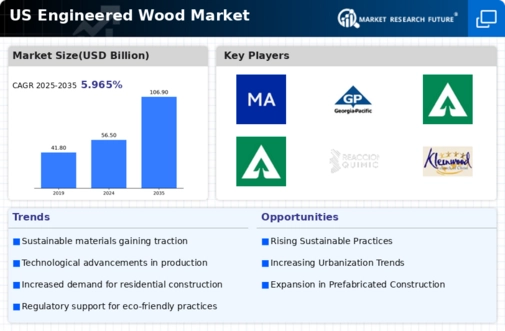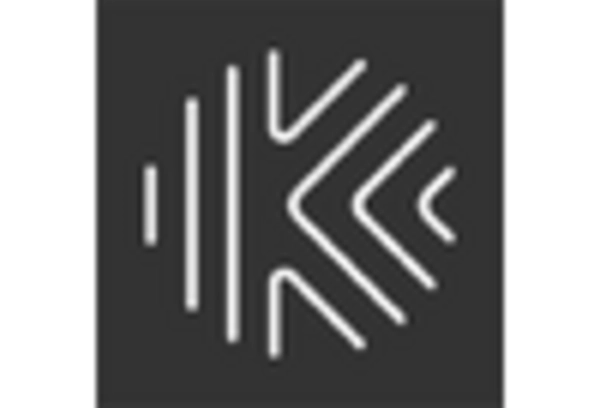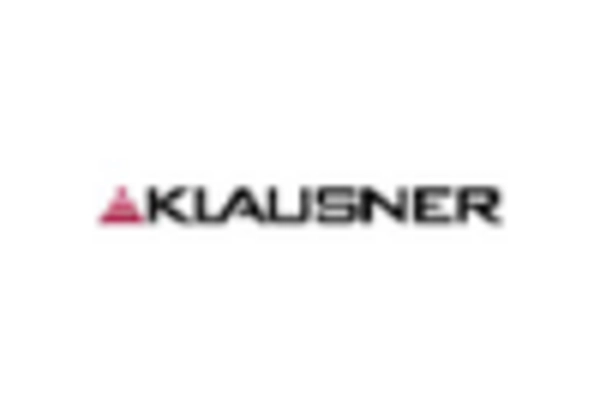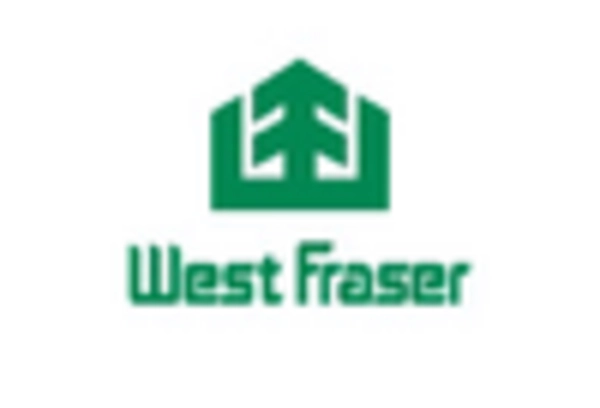Rising Construction Activities
The engineered wood market is experiencing a surge in demand due to increasing construction activities across the United States. As urban areas expand and new residential and commercial projects emerge, the need for sustainable and cost-effective building materials becomes paramount. Engineered wood products, known for their strength and versatility, are increasingly favored by builders and architects. In 2025, the construction sector is projected to grow by approximately 5% annually, further driving the demand for engineered wood. This growth is attributed to the material's ability to meet stringent building codes while offering aesthetic appeal. Consequently, the engineered wood market is poised to benefit significantly from this upward trend in construction, as more developers opt for engineered wood solutions to enhance structural integrity and reduce environmental impact.
Economic Growth and Housing Demand
The engineered wood market is closely linked to economic growth and the corresponding demand for housing. As the U.S. economy continues to recover and expand, the housing market is projected to flourish, with an estimated increase in new home construction by 10% in 2025. This growth is likely to drive the demand for engineered wood products, which are favored for their cost-effectiveness and structural benefits. Additionally, the engineered wood market stands to gain from the rising trend of multi-family housing developments, which often utilize engineered wood for its lightweight and strong properties. As economic conditions improve, the engineered wood market is expected to thrive, supported by a robust housing sector.
Environmental Regulations and Standards
The engineered wood market is influenced by stringent environmental regulations and standards that promote sustainable building practices. In the United States, various federal and state regulations encourage the use of eco-friendly materials, which has led to a growing preference for engineered wood products. These materials are often sourced from sustainably managed forests, aligning with the increasing consumer demand for environmentally responsible options. As of 2025, approximately 30% of new construction projects are expected to incorporate engineered wood due to these regulations. This shift not only supports the engineered wood market but also fosters innovation in product development, as manufacturers strive to meet evolving standards while maintaining performance and cost-effectiveness.
Consumer Preference for Aesthetic Appeal
The engineered wood market is benefiting from a notable shift in consumer preferences towards aesthetically pleasing and customizable building materials. Homeowners and designers are increasingly drawn to the visual appeal of engineered wood, which can mimic the look of traditional hardwood while offering enhanced durability and stability. This trend is particularly evident in residential renovations and new builds, where engineered wood products are often chosen for flooring, cabinetry, and decorative elements. In 2025, it is estimated that the demand for engineered wood in residential applications will account for over 40% of the market share. This consumer inclination towards design versatility is likely to propel the engineered wood market forward, as manufacturers continue to innovate and expand their product offerings.
Technological Innovations in Manufacturing
The engineered wood market is experiencing transformative changes due to technological innovations in manufacturing processes. Advances in production techniques, such as improved adhesive technologies and precision cutting, have enhanced the quality and performance of engineered wood products. These innovations not only increase efficiency but also reduce waste, making engineered wood a more attractive option for builders and manufacturers. As of 2025, the market is projected to see a 15% increase in production capacity, driven by these technological advancements. This growth is expected to bolster the engineered wood market, as companies leverage new technologies to meet rising demand while maintaining competitive pricing and product quality.

















Leave a Comment